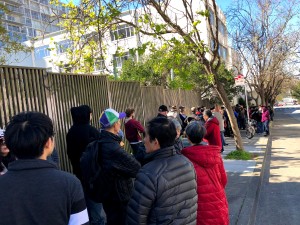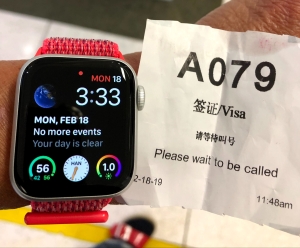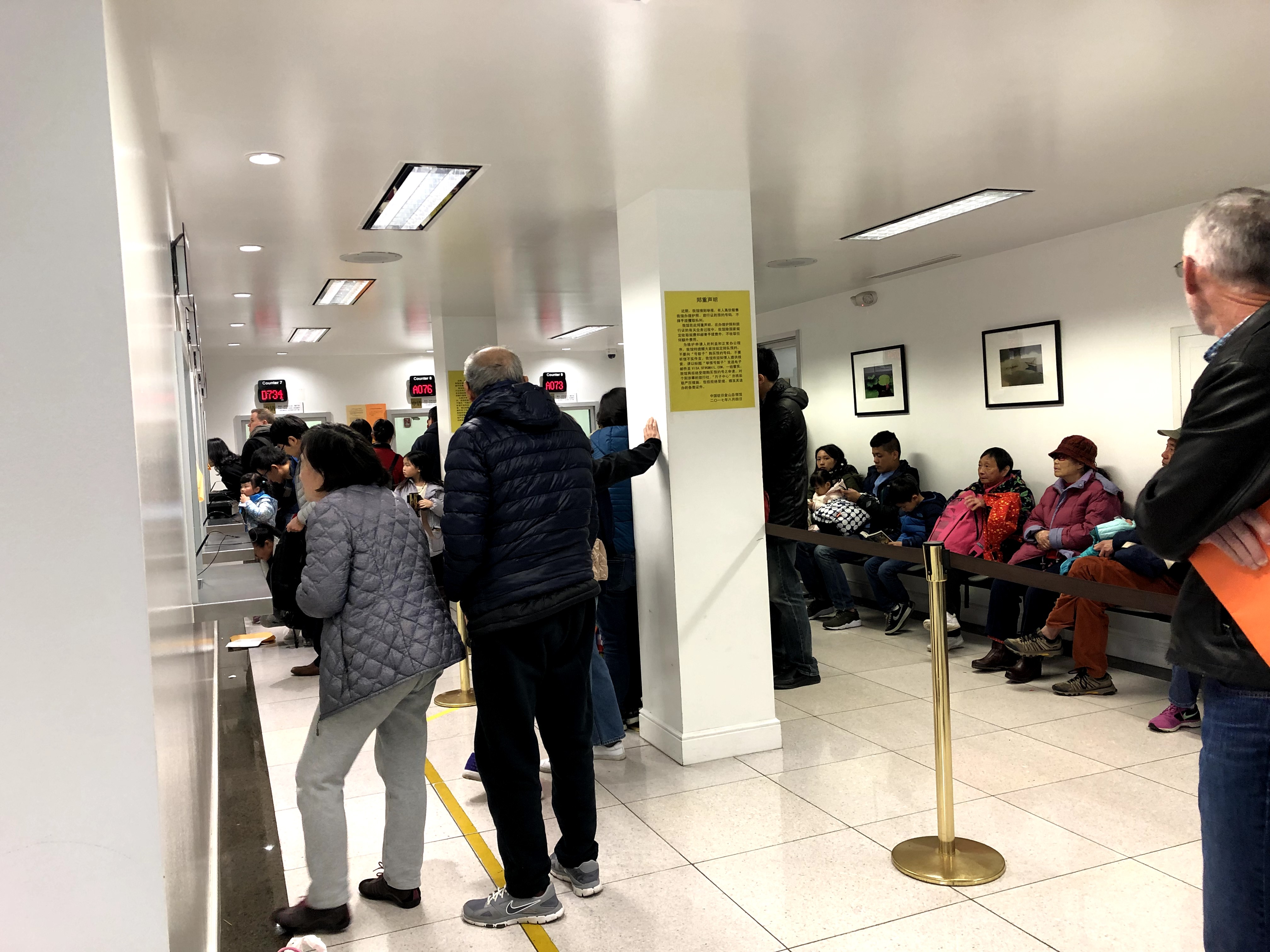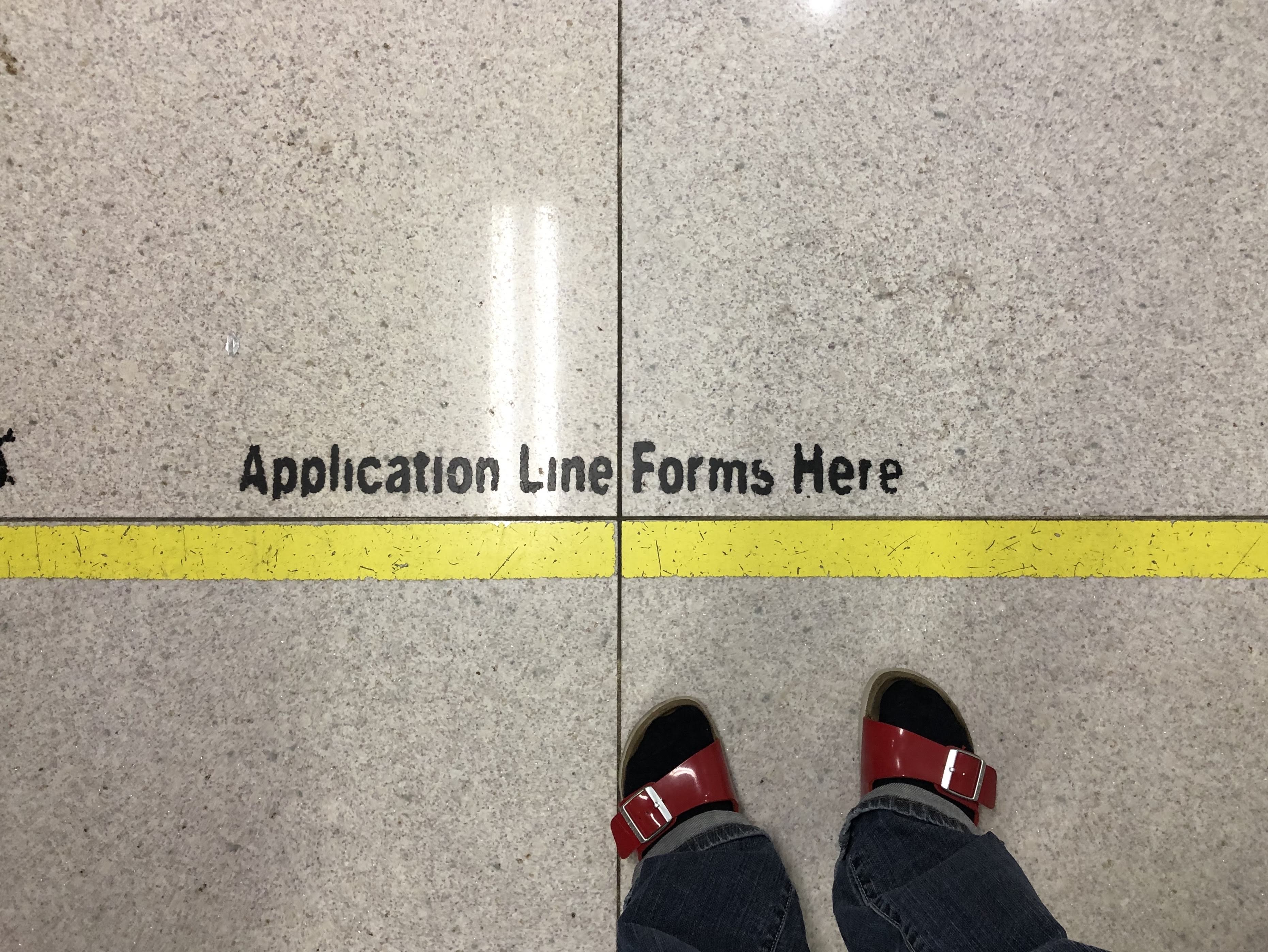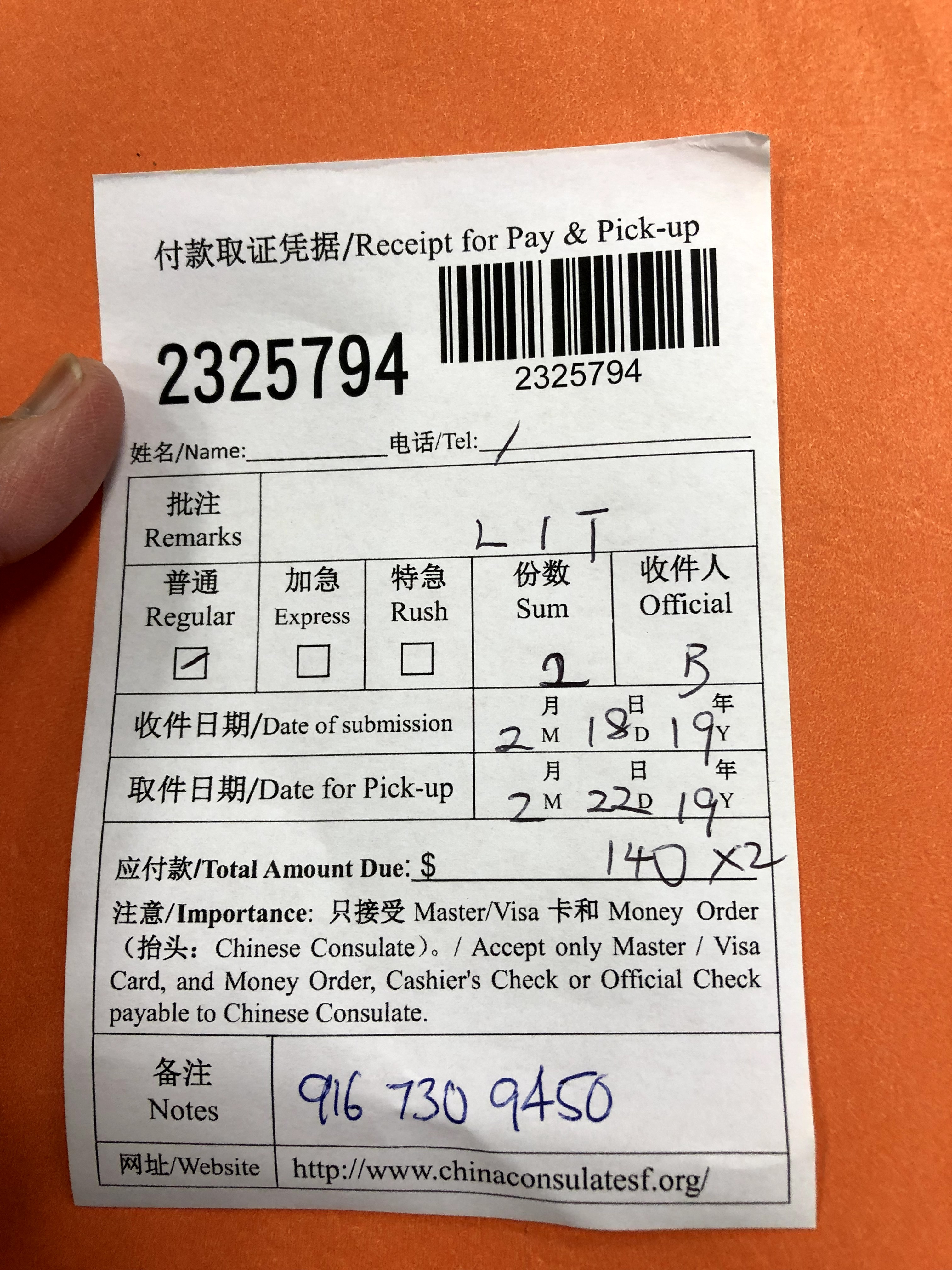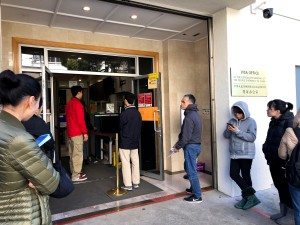For me, the most jaw dropping place in Beijing was Tiananmen Square. You must see it with your own eyes to appreciate the size and scope of the place. The Great Wall of China was very impressive but, in one important way, there is no comparison between the two. Tiananmen Square is enormous, alive and reflects today’s China. A city square on steroids. It is so big that it can hold over 500,000 people at one time, just imagine that. On a weekday in April tens of thousands of people, many from interior China, line up to visit Mao’s tomb. The adjacent Forbitten City is like a set from a movie, but the size of a city. It’s a city within a city, like a maze. Our guide described the complex design: once someone got in there was no easy way to get out (especially for a concubine). The three pictures below of three places we visited are a summary just in case you don’t have time to read the rest of the blog.
Tours for the Tourists
Our busy first day in Beijing. Our group’s agenda: Meet and introduce each other, visit two UNESCO World Heritage Sites: the Ming Tombs and the Great Wall. Then stops at a jade art and jewelry factory, lunch at a small local restaurant, and our welcome dinner. After breakfast we met and introduced ourselves and got assigned seats on the bus for the day. The seat assignments change every day, designed to give all 37 of us a chance to a good spot on the tour bus. The idea of seat assignments made me laugh to myself at first, but later I discovered our guide knew exactly what he was doing. It appeared some people in our group did not understand the logistic of the seating at first, but after a few minutes everyone was settled in and ready to see the City. Once again we were little kids on a school field trip.
We were in heavy traffic trying to get on the outskirts of Beijing, about 26 mile north-northeast of Beijing to the Ming Tombs. While we were going about 5 mile per hour tour guide Andy pointed out and explained to us the Beijing city wall around old Beijing as the bus slowly passed it. But it seemed we were more amazed by the 5 lanes of treelined, lanscaped highway and the high-rise buildings in the distance. Andy explained that once we get to the outer “ring” of Beijing, the traffic will not be as congested.
Along the way the roads were smooth, well paved and lined with trees (forests really) planted on both sides to help with the smog. But solving one problem created another problem for the people of Beijing. There is a lot of tree pollen to deal with in the spring, summer, and fall seasons.
We got to the Ming Tomb around 9am and the first thing we all needed was the restroom or the “happy room.” After our guide got tickets and entered the gate, and the happy room was just a short walk away. I learned later that toilet papers is a luxury in some places we visited in China. I thought of all the rolls of toilet papers I bought at Costco for $15.99 and wished I packed one roll in my backpack. Good thing some ladies in our group planned ahead and shared!
So what are the Ming tombs? The Ming tombs are a collection of mausoleums, a cemetery. This cemetery is world famous because of its thirteen emperor burial sites. The tomb cluster of the Ming Dynasty (1368-1644), sitting at the foot of Mt. Yan and occupying an area of more than 120 square kilometers (29,653 acres), is spectacular. It was listed as a World Heritage site in 2003. The whole area is park-like, a beautiful layout with gardens and granite figures.
After an hour we walked from one end of the park to the other, about 2 miles. The flowers were blooming and the place was just beautiful and interesting.
Our next stop was the jade factory where they have a western-style happy room and free “fire water” for all of us to sample. The jade factory is a retail store that hosts busloads of tourists. The store was designed to show and tell about all thing jade, jade carving, and, of course, to sell. The place was so big that they have one building for foreigners and one building for the local tourists. The first thing I did was to skip the introduction and head straight for the happy room. When I came out our group was disbursed to different counters to shop for that perfect jade trinket. Bob was outside the store talking to the part of our group that had no interested in buying or looking at jade. He was probably boasting to others that I’m too practical to buy any knick-knacks, but then I came out smiling with the little jade pig around my neck. Oops, someone spoke too soon.
Next it was lunch time and we were heading to a local restaurant. There were four big tables waiting for 37 of us. The 14 items were delicious with great flavor, all family style. Andy explained to us what we were eating as each dish was being served. He explained Beijing style cuisine. People at our table loved the hot and spicy dishes, the veggie dishes remained half full while all the pork, chicken, beef and fish dishes were gone quickly as the lazy susan spun. My favorite dish was lotus with tofu. And there was local Beijing beer, a light lager style, 3% ABV!
After lunch we were back on the bus and headed for the Great Wall of China, another UNESCO World Heritage Site. On the way, while Andy explained the roads, the culture, the Olympic village, I began to dose off and I believed half of the people on the bus did the same thing. Too much lunch. Andy explained about the Great Wall and asking us if we knew how long and how old the wall is. Some shouted out the length of the wall then I started to see the wall out the window. My heart skipped a beat at the sight of it spiraling up the mountainsides. Who would have thought that one day I will walk on the Great Wall of China? As we got closer to the wall, Andy recommended all of us hike to the right because of the gentler slope up the hill, the left side of the wall being very steep and hard to climb. I looked at Bob and I knew we we’re hiking to the left, almost strait up.
As we walked up the stairs of the Great Wall, the steps were not even. Bob and I climbed up the steps and because each step was different it almost camouflaged where your foot would land. We climbed for about 45 minutes and the view was amazing. The sky was clear this day and we could see down the valley into the edge of Beijing City. Climbing was not easy, and going back down was harder. At a few places we had to turn around and step down backwards.
On the way back into Beijing we did a quick stop that the Olympic Village. I immediately remembered the Birds Nest Stadium and adjacent Ice Cube Stadium. We ended the day with dinner at another local restaurant.
Day two: Tiananmen Square, the Forbidden City, the Summer Palace and Beijing’s famous Peking Duck.
When our bus approached the edge of Tiananmen Square Andy explained to us that it will be crowded with people and the bus could only stop for few minutes, therefore we need to get off the bus as soon as possible (I learned later many other tour buses let people off a few miles from the square). As we followed Andy through a tunnel to get to the square, it got crowded, and, as I emerged on the edge of the square, I have never seen so many people in one place. Even though there were lots of people, I didn’t feel like I was being crushed or pushed by the crowd. Everyone was moving slowly, respectfully in the same direction.
When we were on the Square the second thing I noticed was that famous picture of Mao on a gate in the distance.
In one direction there was a gigantic long line of people patiently waiting to see Mao’s Tomb. In another direction there were several long lines of people heading to the Forbidden City. And there were masses milling about the middle of the square. We were headed for one of the lines walking toward Mao’s picture. There were local police, military and plain clothes security everywhere. As we waited for the rest to catch up, Andy asked us with a smile if we know knew how many security cameras were on the light post? We all looked at the light pole and saw cameras as if they were berries on a branch.
 |
| Security cameras on every light post |
 |
| Forbidden City Entrance |
Inside the Forbidden City I felt like I was in a movie. The square inside the city was almost as big as the one outside (Tiananmen). The royal palace has a gold roof, red stone and lots of carved dragon and lion decorations. It was like a maze. Hundreds of buildings and internal squares and gardens. We visited the concubine’s section of the palace and it was like another city tucked inside of another city. Lots of walking, lots of history. Andy did a great job of narrating. After a while we wandered out the other side’s grand gates and there was our bus.
 |
| Inside Forbidden City |
Next we visited Summer Palace, a park-like place on an enormous lake built for the royals to escape the heat in Beijing. The origins of the Summer Palace date back to the Jin dynasty in 1153. But it was the Quin dynasty that built the imperial gardens between 1750 -1760. In December 1998, UNESCO added the Summer Palace on its World Heritage List. Another amazing place, more walking, more history.
 |
| Inside Summer Palace |
Then, believe it or not, we actually visited Beijing Zoo! Yes, we visited the zoo to look at the pandas. We only went to the large and famous Beijing Panda exhibit, the rest of the zoo would take an entire day. We ended the day with having Peking Duck for dinner at an somewhat ornate restaurant and all you could drink beer and fire water. The fire water was a strong rice wine, as best I could tell. We stuck to ultra-low alcohol Chinese beer. Bottoms up!
 |
| Afternoon at the Zoo |
Day three: Visiting Old Beijing and the Bell Tower
We visited old Beijing town, the Hutong area. About 20 of us went on this tour, some in the group elected to go shopping or wandering around near our hotel. The Hutongs are located in the center of Beijing and closed to the Forbitten City. The Hutongs are a type of narrow alley formed by the traditional courtyard residences. This preserved area of Beijing is in stark contrast to the rest of the very modern city. Currently, many of the hutongs have been designated as protected to preserve this aspect of Chinese cultural history.
 |
| Tour of Hutong (Old Beijing) |
We rode a rickshaw through the narrow allies and most of the houses were obviously old but not without charm. We visited a family in the middle of the area. They showed us their home and how it now has modern amenities. Close to downtown, the homes are now very valuable. It is quite strange to see brand new BMWs and Mercedes carefully parked outside the old houses and in the narrow alleys. Lots of bicycles and electric scooters too.
Not far away was the old public time keeping tower. Our guide called it Beijing’s Big Ben. We climbed the narrow steps to the top of the ancient Drum Tower and at 10:30 a group of 5 drummers came out and pounded the very large drums. The Drum Tower was built in 1272. Bells and drums were musical instruments used in ancient China. Later they were used by government and communities to announce the time. Over time the Drum Tower was replaced by a Bell Tower and now it is a museum. The sound would echo out over the neighborhoods. At the base of the Drum Tower, a park, locals were playing hack sack in a large circle. They were good!
That wrapped up the three days in Beijing. We visited the oldest cemetery, the oldest wall, the oldest palace, the oldest alleys, the lazy pandas, ate a lot of great food, and drove by a place where Usain Bolt and Michael Phelps broke records. But the most significant site to me was Tiananmen Square. Where 500,000 people can gather every day to view the tomb of a dead leader in orderly lines, no shoving, no complaining, no protesting.
Stay tune for Part 3 - The Yangtze River, China new revolution - the Toilet Revolution






















